When you begin looking into real estate investing, whether actively or passively, we have confidence that it is best to begin with the end goal in mind. So what is right for you, cash flow or gains?
One of the main things we focus on at Ohana Investment Partners, when working with investors, is their investing goals, what they are looking for and where their funding is coming from. This will help determine what type of investment is right for their needs.
There’s been quite a bit of news and gossip about the economy and the market. Even the best of us sometimes finds ourselves preoccupied by the economy and market predictions, leaving us asking, “What is the best investment plan considering the current market?”. Well, no one has a magic eight ball, and there is definitely a lot of assumption floating around, but you can make educated decisions and make sure your investing goals are at the forefront of those decisions.
After you make a decision to invest in a real estate syndication transaction and you’ve considered risk and other issues such as, rates of return and the business plan of the asset, your focus should go back to your original investment plan and your goals.
Making informed decisions requires knowledge and understanding of two investing strategies and the perception behind them.
The two investing techniques we’re referring to are:
● Gains Strategy
● Cash Flow Strategy
Let’s dive into both and see which may be best for you, as an investor.
The Gains Strategy
Gain-focused investments concentrate on buying low and selling high, which results in a profit gap between deals. This method used mainly for residential investments like fix-and-flips, tax deeds and foreclosures.
Real estate syndication business plans may call for purchasing an undervalued property at a low-cost base, making alterations or repairs, then reselling it for more money than you bought it. This is similar to a fix and flip on residential real estate but on a much larger scale over a longer time period.
In these types of dealings, it is important to make sure the property is purchased with a business plan in place that will drive the appreciation of the property. You would do this by increasing revenue, decreasing expenses or both.
One of the most popular real estate quotes is, “You make your money when you buy, not when you sell.” This is absolutely true.
The gains or profits technique will require investors to have a separate source of income which will allow them to maintain their lifestyle for the duration of their ownership or investment. You don’t see much of the return on investment until the asset sells. This is why it is important to know the hold time of any investments and plan accordingly.
The Cash Flow Strategy
Cash flow focused tactics can provide steady dividends if that is what you are looking for. Cash flow is not about trying to time the market, buy low, or create a big spread. In an ideal cash-flowing investment, there’s enough profit each month to cover property costs and still pay a dividend to owners or investors.
For residential real estate, the most appealing feature of rental properties with established, dependable renters is the theoretical predictability of your profits. Obviously, this can change with unexpected costs, but this is the most dominant thoughts when referring to rentals. Apartment and multi-family investing is similar, but on a much larger scale, so any capital expenses or vacancies are spread across a larger number of units. This way the property can still produce cash flow. This cash flow can supplement your income or become your income, so you can focus on the things you want to do.
If the cash flow you are receiving from investments are supporting your lifestyle rather than being reinvested, a cash flow-focused investing strategy may be advantageous.
Can You Have Your Cake And Eat It, Too? Yes!
The answer to the question, ” What is the best investment plan considering the current market?”. is not simply cash flow or gains. You can pick both!
By looking for real estate investment syndications that offer both advantages at once, you can create passive income steadily and take advantage of the wealth-building potential of appreciation and gains. This will give you the best of both worlds.
We usually recommend this strategy because it prevents you from locking yourself into investments with minimal to no predicted long-term appreciation while they are producing cash flow.
Also, this prevents you from investing in properties that are simply focused on profits that will disrupt your cash flow.
Of course, a factor that will play into your investment decisions will be where funds are coming from. But we cover that in another article 😉
Deciding Which Plan Is Best For You
What characteristics you like in an investment opportunity will ultimately depend on your particular circumstances and your financial objectives as well as the goals you have in place for yourself and your family.
Appreciation-oriented, gains, syndications may be your priority if you have no immediate need for cash flow and are instead focused on growing your retirement fund, which you won’t touch for another 10-15 years.
On the other hand, a dependable, cashflow-focused syndication may work for you if it would enable your partner to abandon the stress of the workplace and focus more on your family or what they love.
Investing in real estate syndications can help you achieve your short-term and long-term goals.
Finding the ideal investing strategy for you will be much more straightforward if you have a clear idea of where you’re headed and what you want to achieve, which is why we always start with your goals in the driver’s seat. Only after those goals are identified, will you be able to decide whether to match your real estate investments with a gains strategy, a cash flow plan, or a combination of both.
At Ohana Investment Partners, we believe investing in real estate syndications with cash flow and appreciation built into each deal is the ideal approach to simultaneously grow wealth and independence.

